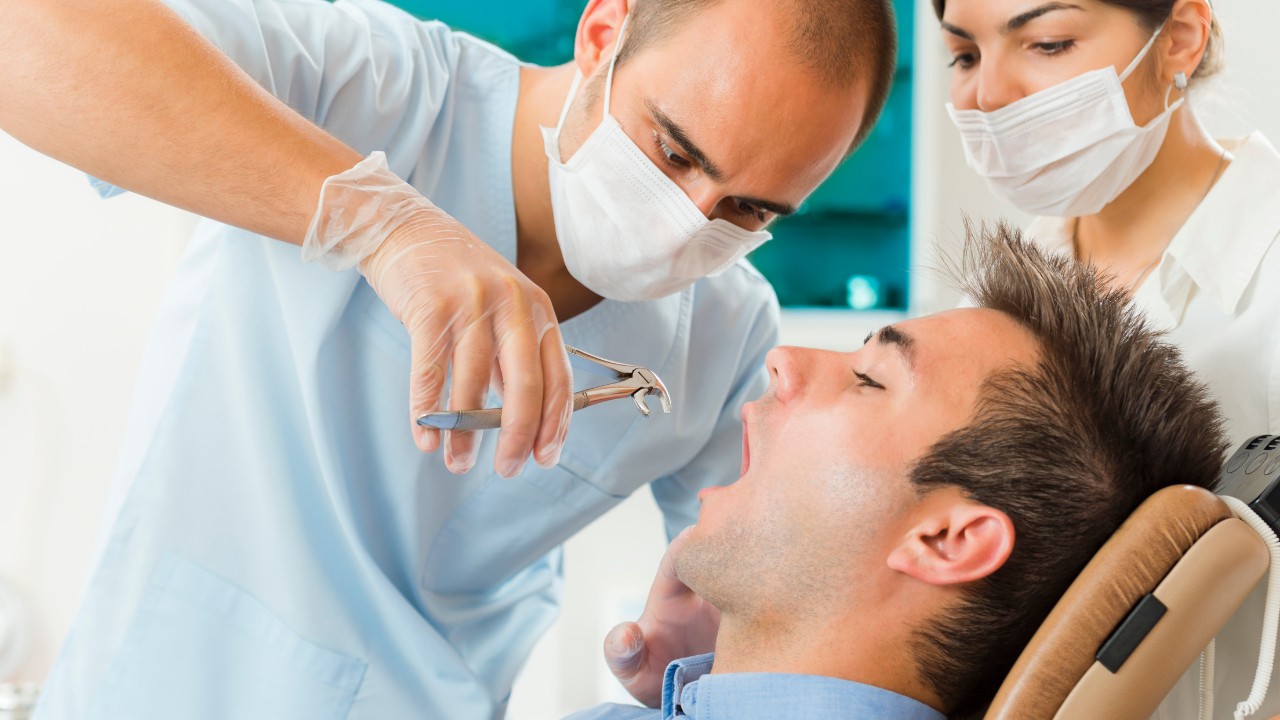When you think about a tooth extraction, the first thing that might come to mind is the idea of scary tools and sharp instruments. But in reality, the tools dentists use are highly specialized, gentle, and designed to make the process quick, safe, and painless.
Understanding these tools can help ease your anxiety and give you a better idea of what happens during teeth extraction in Islamabad. Every instrument has a purpose—each one is crafted to minimize discomfort and ensure precision during the procedure.
Let’s take a closer look at the main tools your dentist uses for tooth extraction and why they’re so important.
1. The Dental Elevator: Lifting the Tooth Gently:
The elevator is one of the first tools used in a tooth extraction. Despite its name, it doesn’t lift you—it lifts the tooth!
Purpose:
The elevator helps loosen the tooth from its socket before it’s removed. It gently separates the tooth from the surrounding bone and periodontal ligament, making the extraction smoother and less forceful.
How It Works:
-
The dentist places the elevator between the tooth and gum.
-
By applying controlled pressure, the tool gently rocks the tooth back and forth.
-
This loosens the tooth’s grip on the bone so it can be easily removed with forceps.
Why It’s Important:
Using the elevator minimizes trauma to the gums and bone, reduces bleeding, and makes the entire extraction more comfortable.
In modern clinics for teeth extraction in Islamabad, dentists use ergonomic elevators with fine tips that allow precise and gentle movement.
2. Extraction Forceps: The Tooth Grippers:
Once the tooth has been loosened, the dentist uses forceps—the main tool for actually removing the tooth.
Purpose:
Forceps are used to grasp and remove the tooth from its socket after it’s loosened.
Design:
-
Shaped like pliers, but far more delicate and precise.
-
Have different designs depending on which tooth is being extracted (front, molar, or root).
-
Made of surgical-grade stainless steel for maximum hygiene and durability.
Types of Forceps:
-
Universal Forceps: Used for general extractions in various areas of the mouth.
-
Molar Forceps: Specially shaped to fit around the large molars.
-
Anterior Forceps: Slim and curved for the front teeth.
-
Root-Tip Forceps: Designed to remove small root fragments without damaging bone.
Why It’s Important:
Forceps allow the dentist to remove the tooth smoothly, without unnecessary pulling or twisting.
Dentists trained in teeth extraction in Islamabad use the correct type of forceps based on your tooth’s shape and position, ensuring a clean, efficient removal.
3. Periosteal Elevator: The Gum Separator:
The periosteal elevator is a thin, flat instrument used before the main extraction begins.
Purpose:
It separates the gum tissue from the tooth and bone to create access for other instruments.
How It Works:
-
The dentist gently slides the elevator under the gum line.
-
It lifts and retracts the gum tissue without tearing it.
Why It’s Important:
This step helps prevent gum injury and ensures the dentist can see the tooth’s full structure clearly.
In advanced clinics offering teeth extraction in Islamabad, dentists use periosteal elevators with ergonomic handles and fine-tipped ends for maximum precision and comfort.
4. Root Tip Picks and Elevators:
Sometimes, especially in cases of broken or decayed teeth, small root tips remain inside the socket after extraction.
Purpose:
Root tip picks and elevators are delicate tools used to remove leftover root fragments safely.
How It Works:
-
The dentist uses these thin, hook-shaped tools to gently lift root fragments from the socket.
-
The procedure is done under magnification for precision.
Why It’s Important:
Leaving root fragments behind can cause infection or delayed healing. These specialized tools ensure complete removal with minimal trauma.
5. Bone File and Rongeurs: Smoothing the Edges:
After tooth removal, the socket edges may be sharp or uneven. Dentists use bone files or rongeurs to smooth the area.
Bone File
-
Used for gentle trimming and smoothing of small bone edges.
-
Helps prevent irritation and promotes better healing.
Rongeurs
-
Slightly stronger than bone files, used to remove small bone pieces.
-
Typically used during surgical extractions.
Why They’re Important:
Smooth bone edges help in faster tissue recovery and prevent discomfort after the procedure.
Clinics offering teeth extraction in Islamabad often use advanced, precision-made bone files that minimize trauma and speed up healing.
6. Surgical Drill and Bur:
When a tooth is impacted (especially wisdom teeth) or broken under the gum, the dentist might use a dental drill and bur.
Purpose:
These tools help remove bone around the tooth or section the tooth into smaller pieces for easier extraction.
How It Works:
-
The dentist uses a high-speed handpiece with a bur (a small rotary cutting tool).
-
This helps access difficult-to-reach teeth without excessive pressure.
Why It’s Important:
Using drills makes surgical extractions more controlled and less invasive.
Dentists performing teeth extraction in Islamabad use water-cooled, quiet drills to keep you comfortable throughout the process.
7. Curettes and Suction Devices: Keeping It Clean:
After removing the tooth, dentists use curettes and suction tools to clean the socket.
Purpose:
-
Curettes: Scrape away any tissue debris or infection inside the socket.
-
Suction Devices: Remove saliva, blood, and fluids to keep the area dry and visible.
Why They’re Important:
Clean sockets heal faster and reduce the risk of infection.
Modern suction systems in Islamabad’s dental clinics are silent and comfortable, ensuring a calm patient experience.
8. Gauze and Hemostatic Agents: Stopping the Bleeding:
Once the tooth is out, the dentist focuses on bleeding control and clot formation.
Tools Used:
-
Sterile gauze pads placed on the extraction site for 20–30 minutes.
-
Hemostatic agents (like collagen sponges) that encourage faster clotting.
Why It’s Important:
Proper clot formation is vital for healing. It protects the bone and nerves underneath the socket and prevents dry socket, a painful post-extraction condition.
9. Sutures (Stitches): Closing the Site:
In surgical extractions or cases where the gum was cut open, sutures are used to close the wound.
Types of Sutures:
-
Absorbable: Dissolve naturally in a few days.
-
Non-absorbable: Removed after about a week.
Why They’re Important:
Sutures help protect the wound, control bleeding, and speed up recovery. Dentists performing teeth extraction in Islamabad use ultra-fine, biocompatible suture material for clean, scar-free healing.
10. Dental Mirror and Explorer: The Eyes of the Dentist:
Even though these are basic tools, they’re crucial during every dental procedure.
Purpose:
-
Dental Mirror: Allows the dentist to see angles inside your mouth clearly.
-
Explorer (Probe): Helps check for debris or small fragments after extraction.
Why They’re Important:
These instruments ensure precision and safety during every stage of the extraction process.
Why You Don’t Need to Fear These Tools:
While dental tools might look intimidating, they’re designed for comfort, control, and safety. Modern instruments are lightweight, sterilized, and shaped to minimize pressure on your teeth and gums.
Dentists performing teeth extraction in Islamabad are trained to use these tools with precision and care, ensuring you experience no pain and minimal recovery time.
Conclusion:
Tooth extraction isn’t about force or pain — it’s about precision, care, and technique. Every tool your dentist uses plays an important role in making sure the procedure is safe, smooth, and stress-free.
From the gentle elevator that loosens the tooth to the forceps that remove it, and the gauze that helps you heal, each instrument works together to protect your comfort and oral health.
If you’re planning teeth extraction in Islamabad, you can rest assured that your dentist will use state-of-the-art tools and modern techniques to ensure a painless, professional experience.
For more information visit Dental Clinic Islamabad.



